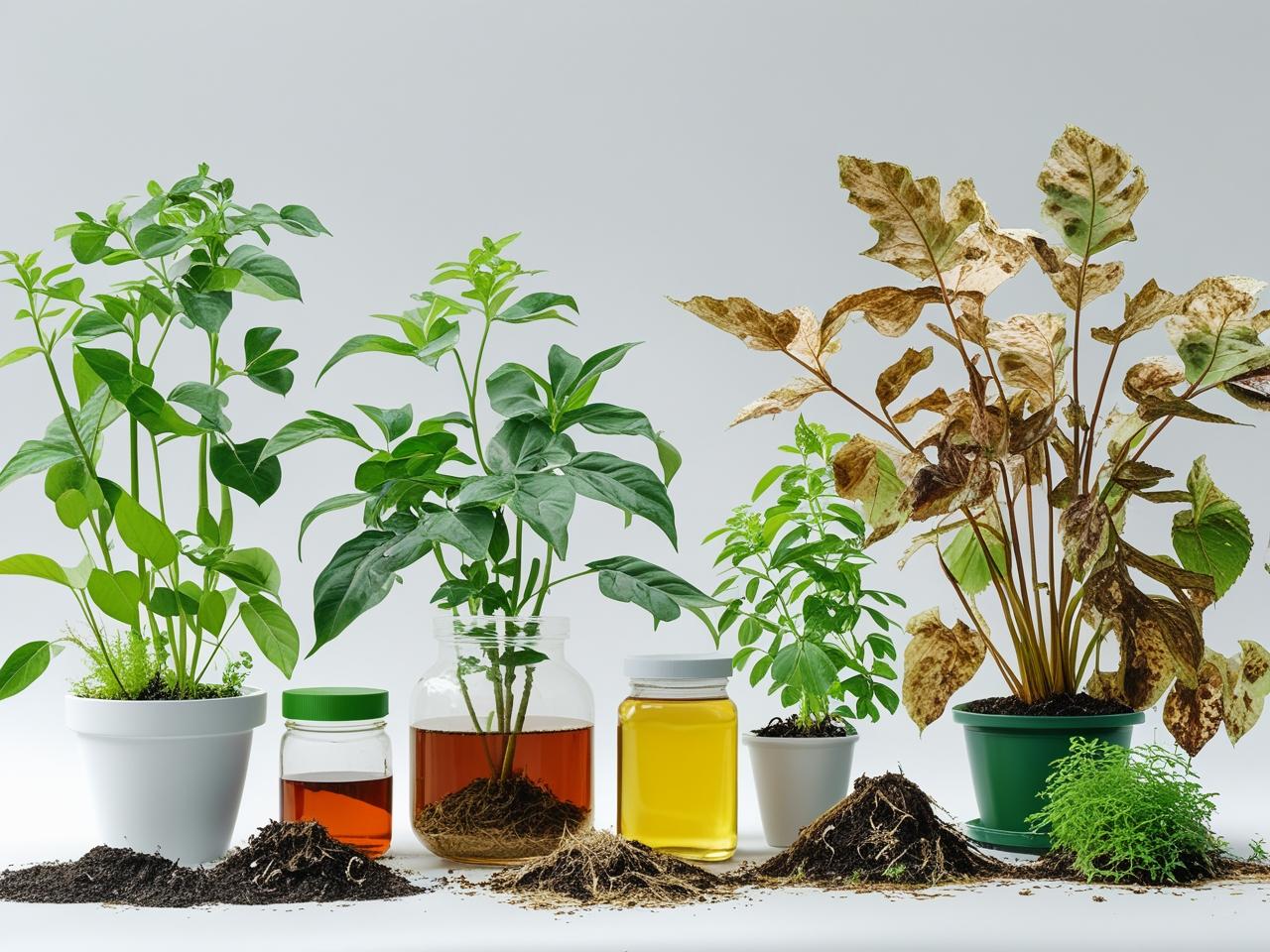Dealing with plant diseases naturally supports healthy growth without relying on synthetic chemicals. By observing garden conditions, improving cultural practices, and using organic treatments, you can prevent and manage common issues like powdery mildew, leaf spots, blight, root rot, and rust. This guide explores how to keep your plants vibrant using environmentally friendly strategies.
Understanding Common Plant Diseases
Knowing disease symptoms helps you act quickly:
Powdery mildew looks like white, powdery patches on leaves and stems. Leaf spots are dark, circular lesions caused by fungi or bacteria. Blight leads to sudden wilting and browning of entire foliage or stems. Root rot manifests as wilted plants and mushy, dark roots. Rust appears as orange or red pustules under leaves. Early diagnosis is key to managing disease effectively.
Improve Air Circulation and Sunlight
Dense foliage or overcrowded plants trap moisture, promoting fungal growth. Thin branches, prune canopy edges, and space plants appropriately. Position vegetables in sunny spots, trim overhanging shrubs, and remove debris to allow sunlight and ventilation through the canopy.
Use Resistant Varieties
Select plant cultivars bred for resistance to specific diseases. For example, choose tomato varieties resistant to late blight, downy mildew-resistant cucurbits, or powdery mildew-resistant roses. Resistant plants remain healthier publicly, reducing treatment needs.
Practice Crop Rotation and Clean Bed Practices
Rotate annual crops yearly—don’t plant tomatoes, peppers, or potatoes in the same spot more than once every three years. Remove infected plant debris at the end of the season, and dispose of diseased material safely (do not compost it). Clean garden tools between beds using a 10% bleach solution to prevent disease spread.
Water Properly to Prevent Disease
Avoid overhead watering, which creates damp foliage and favorable disease conditions. Instead, water at the base of plants early in the morning so any moisture dries quickly. Use drip irrigation or soaker hoses. Keep mulch a few inches from plant stems to prevent soil-borne pathogens from splashing up.
Strengthen Soil and Plant Health
Healthy plants resist disease naturally. Maintain fertile, well-draining soil loaded with organic matter. Use compost, worm castings, and balanced fertilizers. Beneficial microbes suppress disease-causing pathogens in the soil. Incorporate mycorrhizal inoculants to support root health and defense.
Apply Natural Fungicides and Biologicals
Use organic-approved treatments when infections appear:
Baking soda spray: Mix 1 teaspoon baking soda, a few drops of liquid soap, and 1 liter of water. Spray weekly on mildew-prone plants like squash or roses.
Neem oil: Works as a fungicide and insecticide. Mix 1 teaspoon with 1 liter of water and spray foliage thoroughly.
Milk spray: Dilute skim milk 1:9 with water, then spray on vines or susceptible foliage.
Sulfur powder: Dust powder on stone fruits or roses to prevent mildew; avoid exposing plants to extreme heat when applying.
Copper-based fungicide: Organic-approved formulations help combat blights and leaf spots; rotate with other treatments to reduce resistance.
Beneficial microbes: Products containing Trichoderma, Bacillus subtilis, or Bacillus amyloliquefaciens support plant defense and suppress soil pathogens.
Remove and Isolate Infected Plant Parts
Cut off diseased leaves, stems, and fruits with sterilized tools. Wear gloves and dispose of cuttings in sealed bags. Sanitize tools after use. Regularly inspect and remove emerging disease nodules throughout the season.
Encourage Beneficial Insects and Environment
Attract predatory and parasitic insects that help limit vector-borne diseases. Grow insectary plants like alyssum, dill, and fennel to attract beneficials like ladybugs, parasitic wasps, and hoverflies. In greenhouses, release biocontrol agents such as predatory mites to reduce disease spread.
Monitor Weather and Forecasts
Disease spreads under cool, wet conditions or hot, humid weather. Stay aware of local forecasts and increase preventative spraying ahead of high-humidity periods. Use disease prediction apps or local extension resources for alerts on regional outbreaks.
Practice Companion Planting for Disease Resistance
Companion planting can reduce disease incidence. For instance, basil planted near tomatoes may reduce bacterial spot frequency. Marigolds can suppress nematodes, preventing root rot in adjacent plants. Research suggests some combinations emit chemicals that inhibit pathogens.
Sanitize Gardening Equipment
Clean hoe blades, pruners, and pots regularly. Use a 1:9 bleach solution or 70% isopropyl alcohol to disinfect between plantings. This prevents transferring spores or bacteria from one plant to another.
Improve Drainage in Containers and Soil
Waterlogged roots are disease-prone. Ensure pots have adequate drainage holes, and soil drains freely. Add perlite, coarse sand, or compost to containers. In beds with heavy soil, raise beds or improve structure with organic amendments.
Use Mulch Strategically
Mulch suppresses weeds and prevents soil splash, but it can retain too much moisture. Use a breathable layer like straw or wood chips, and leave a gap around plant stems. Top-dress soil with dry materials like cocoa hulls or gravel beneath plant bases.
Rotate Natural Treatments
Avoid treatment resistance by alternating control methods. Use neem one week, baking soda the next, and follow with microbial sprays. Monitor plant response and adjust frequency accordingly.
Recovering from Severe Infections
If disease decimates a plant, remove it entirely to protect remaining plants. Replace soil if infection is root or soil-based. Disinfect containers thoroughly before replanting.
Track and Document Disease Management
Keep a garden journal: note weather, disease symptoms, treatments, and plant recovery. Over time, you’ll identify patterns in disease outbreaks and build an effective management routine.
Community Resources and Support
Consult local cooperative extensions, master gardener programs, or garden groups for disease diagnostics. Soil and plant tissue testing helps to confirm pathogens. Sharing info about emerging diseases (e.g., blight, citrus greening) keeps your garden resilient.
Final Thoughts
Natural plant disease management draws on prevention, cultural care, resistant varieties, and organic treatments. By improving airflow, practicing hygiene, strengthening plant health, and applying natural sprays when needed, you protect your garden without harmful chemicals. Sustainable practices build soil life and immunity over time. If you’d like help diagnosing a specific disease or creating a management plan tailored to your plants and region, I’m here to help!

